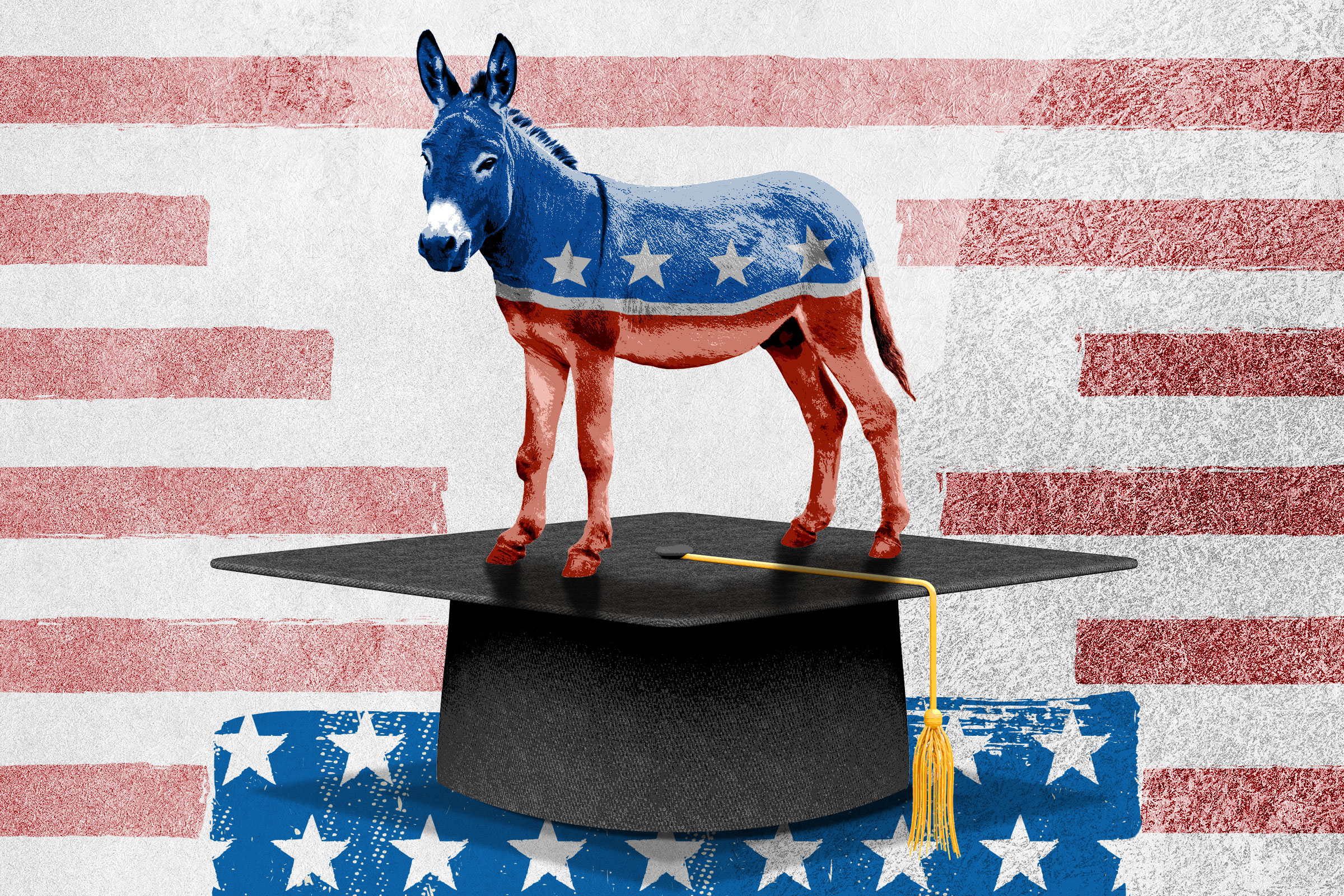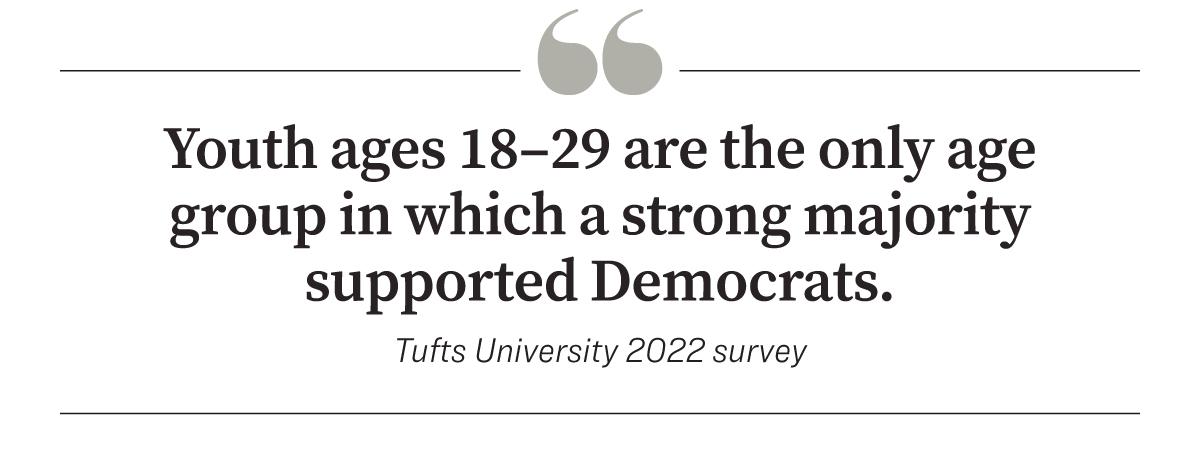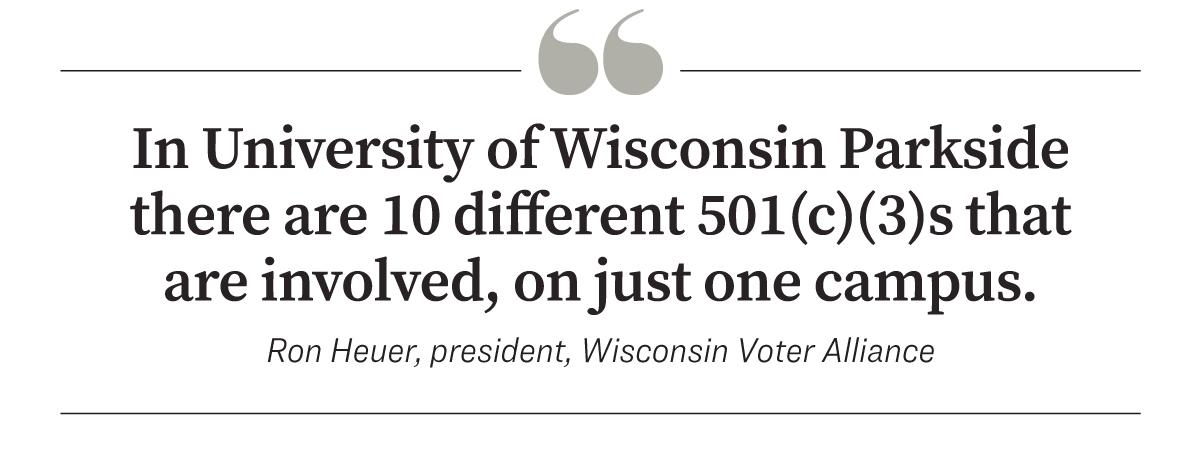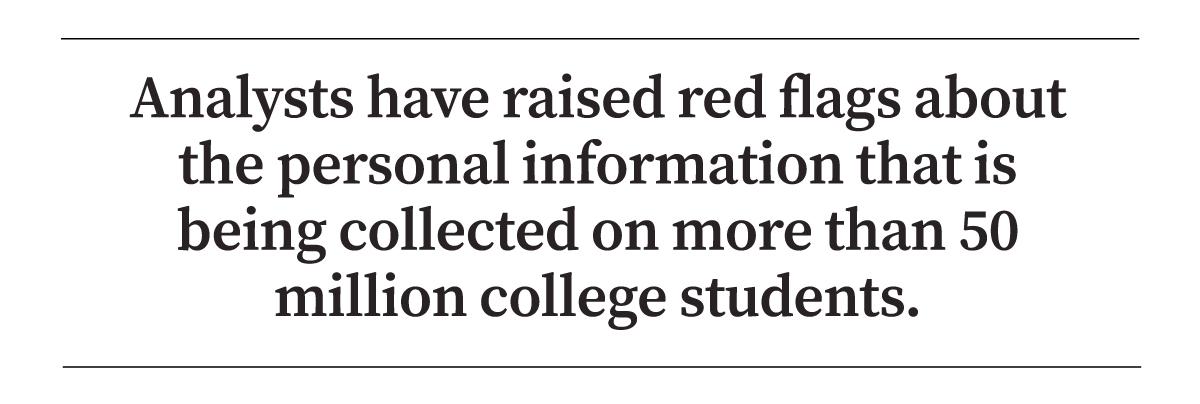The upcoming election will likely be less about changing voters’ minds and more about rousing the faithful and getting them to the polls.
A lawsuit currently moving through Wisconsin courts appears to provide a case study for how these campaigns translate into election wins for the Democratic Party.
In February, Vice President Kamala Harris highlighted that the government is paying college students to register voters.
Ms. Harris said the Biden administration has been able “to charge federal agencies with doing the work that they rightly can do to inform the American people of their right to vote.”
Paying students to canvass is the latest component of an initiative originated under former President Barack Obama to increase student voting. Initially, this was carried out in conjunction with private nonprofit organizations such as Civic Nation.
Its stated goal is “fighting for gender equity, social justice, and more,” and it leads the All In Campus Democracy Challenge nonprofit that engages with university administrators to get them to sign up student voters.
Under the Biden administration, however, the student get-out-the-vote campaign is now being run with federal funds, spearheaded by the Department of Education (DOE).
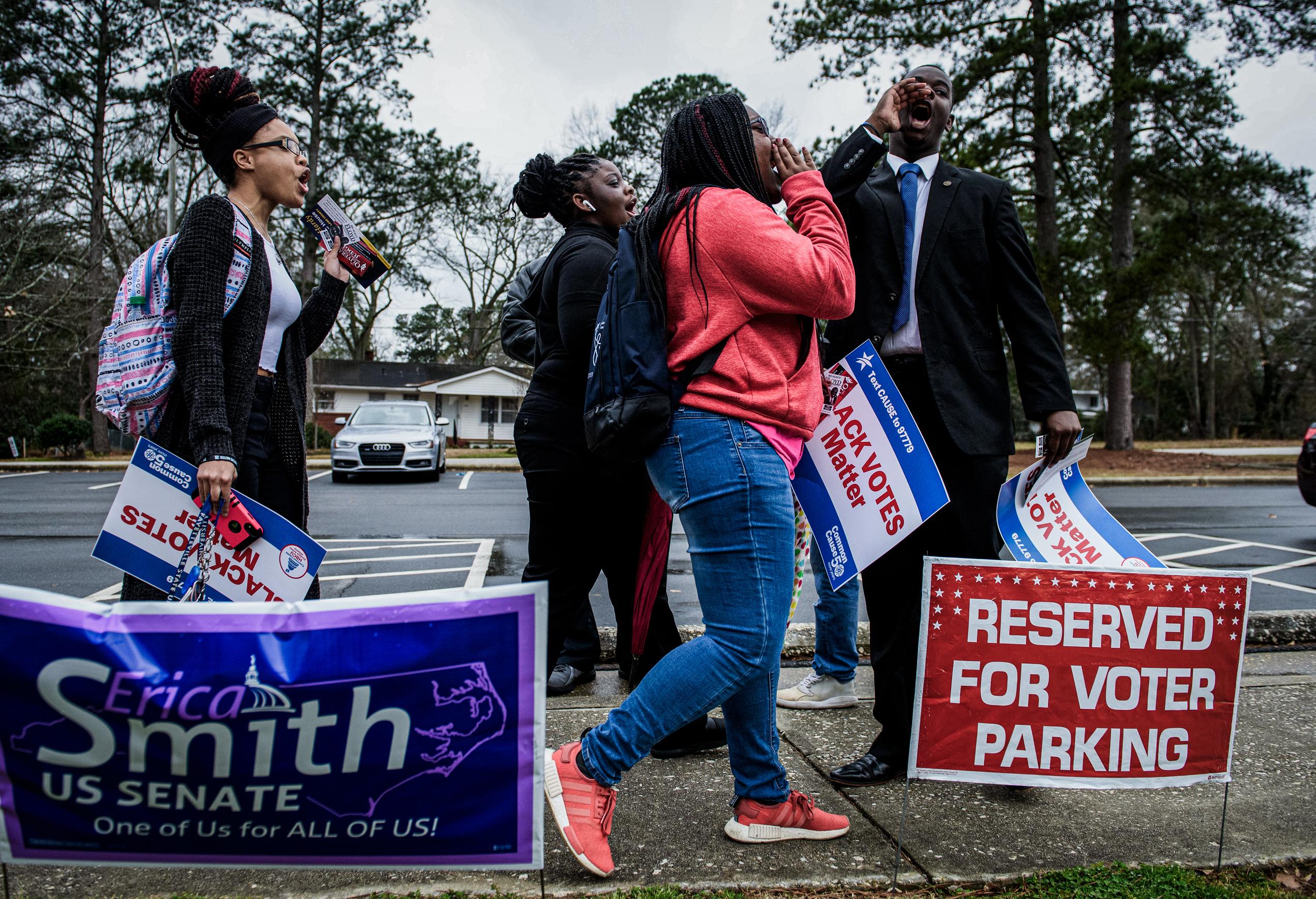
Executive Order Backed by Federal Funds
President Biden’s Executive Order 14019 compels all government agencies to take part in a nationwide effort to register voters and includes a program by the DOE that pressures educational institutions to demonstrate that they have signed up students to vote.The letter also clarifies when Federal Work Study dollars can be used “for nonpartisan civic engagement work,” according to the DOE.
Up until 2002, the youth vote was evenly split between the two parties, the report states, but since that time, young people have shifted sharply in favor of Democrats by what is now a 28-point margin. The get-out-the-vote campaigns do not target all young voters equally, however. Instead, they focus their efforts on the most reliable Democrat voters—those who attend college.
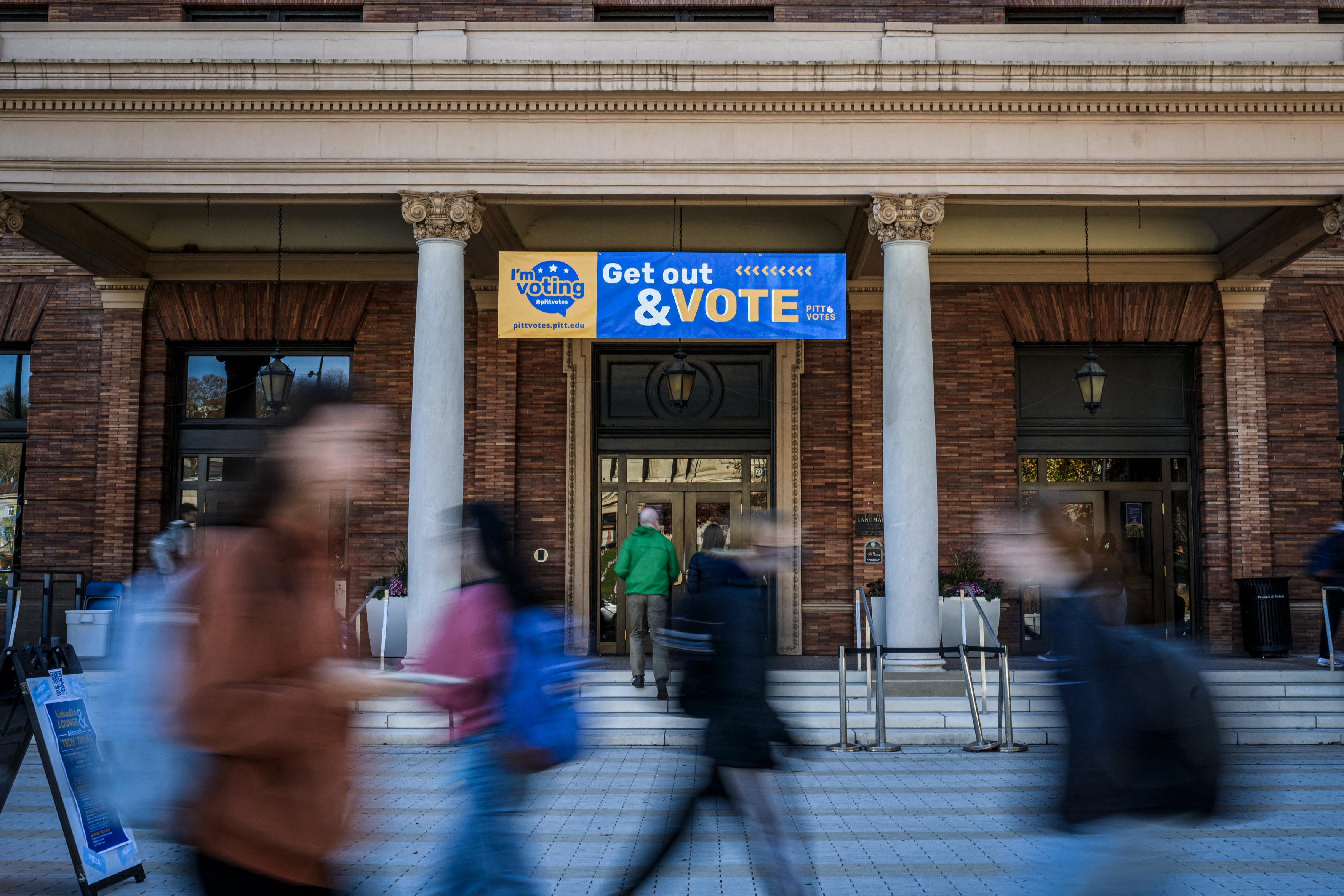
Students Vote Like Their Teachers
A 2020 report by the National Association of Scholars found that Democrat-registered professors outnumbered Republican-registered professors by a ratio of 10 to one, a gap that has widened from a ratio of 4.5 to one in 1999.“Research since World War II has consistently found overwhelmingly left-oriented political attitudes and ideological self-identification among college and university faculty,” the National Association of Scholars’ report reads. “It has also found overwhelming support for the Democratic Party.”
The other factor that makes the college vote so attractive to Democrats is the location of college students in key swing states, where a few thousand votes can deliver a win in a tight election. For this reason, it may not be coincidental that the youth turnout rate has been much higher in swing states than non-swing states.
The CIRCLE report found that among the highest states for youth voter turnout were Michigan, Minnesota, Pennsylvania, Arizona, Colorado, Maine, Nevada, and Georgia. In Michigan and Pennsylvania, for example, 36.5 percent and 31.7 percent, respectively, of residents younger than the age of 29 voted in 2022.
This contrasts sharply with neighboring non-swing states such as West Virginia (14.2 percent), Delaware (18.7 percent), New Jersey (20.6 percent), Ohio (21.6 percent), Connecticut (21.4 percent), New York (20.7 percent), and Massachusetts (18.5 percent). Oregon, a reliable blue state, bucked this trend with 35.5 percent youth turnout.
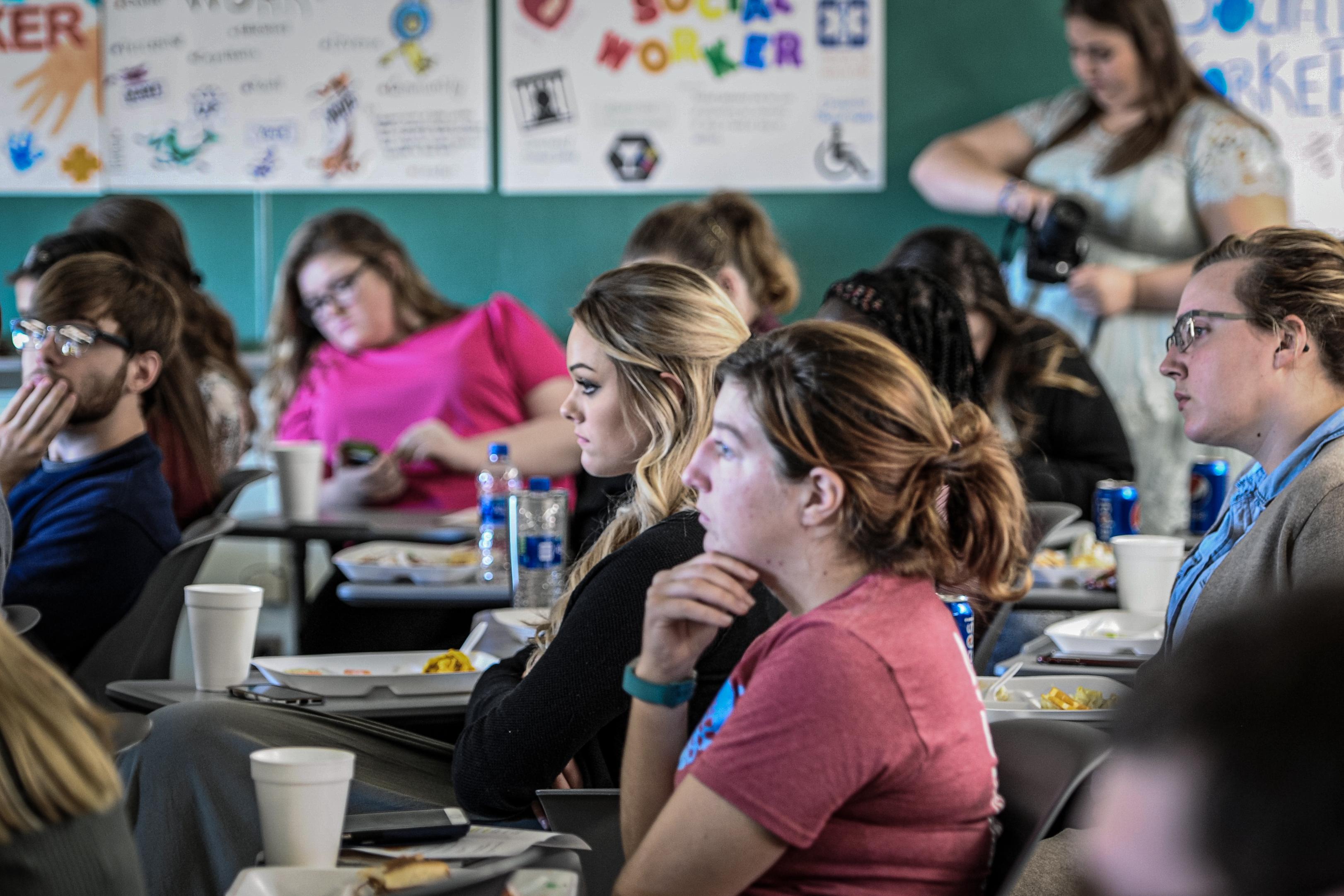
A Wisconsin Case Study
Wisconsin, another key swing state, didn’t report youth vote numbers in the CIRCLE report. But a lawsuit brought by a nonprofit called the Wisconsin Voter Alliance (WVA), which a judge recently approved for the discovery phase, argues that a partisan campus voter drive is occurring in the state and that it’s delivering results for left-wing candidates.“It’s extremely effective,” WVA President Ron Heuer told The Epoch Times. “They’re using our facilities, paid for by U.S. taxpayers, and employees of our universities to run this whole scheme, and presidents of universities across the nation have all signed on to this thing.”
The WVA has been gathering voting data on student voting in Wisconsin since 2020. What they discovered was both exceedingly high rates of student registration relative to the rest of the population, together with overwhelming percentages of student votes going to Democrat candidates.
Analyzing data from the 2022 elections, the WVA calculated that the percentage of voters on college campuses well exceeded voter turnout elsewhere in the state, which averaged 58 percent across Wisconsin, and that votes for Democrat candidates in university wards far exceeded state averages. Mr. Heuer said voting records show a surge in same-day voter registrations throughout the university system.
“There are some really strange things going on on campuses, with regard to left-leaning 501(c)(3) organizations taking control of the entire process of voter registration and get-out-the-vote,” he said.
Mr. Heuer’s investigation began at the state’s flagship campus, the University of Wisconsin–Madison.
“As we were looking into this, we started to realize that on each one of the University of Wisconsin campuses, there are people who are assigned to work with All In on their programs,” he said. “For example, in University of Wisconsin–Parkside, there are 10 different 501(c)(3)s that are involved on just one campus.”
These left-leaning nonprofits, included Civic Nation, the Andrew Goodman Foundation, Vote.org, Ask Every Student, Voces de la Frontera, and the American Democracy Project, according to Mr. Heuer.
Across the 17 largest campuses in the state, WVA measured the number of votes cast in the 2022 election against voter registration on Nov. 1, 2022, the day before the election. They found that votes cast exceeded prior registered voters by a large percentage. In one case, at the University of Wisconsin Superior, votes cast exceeded prior registered voters by 10 times.
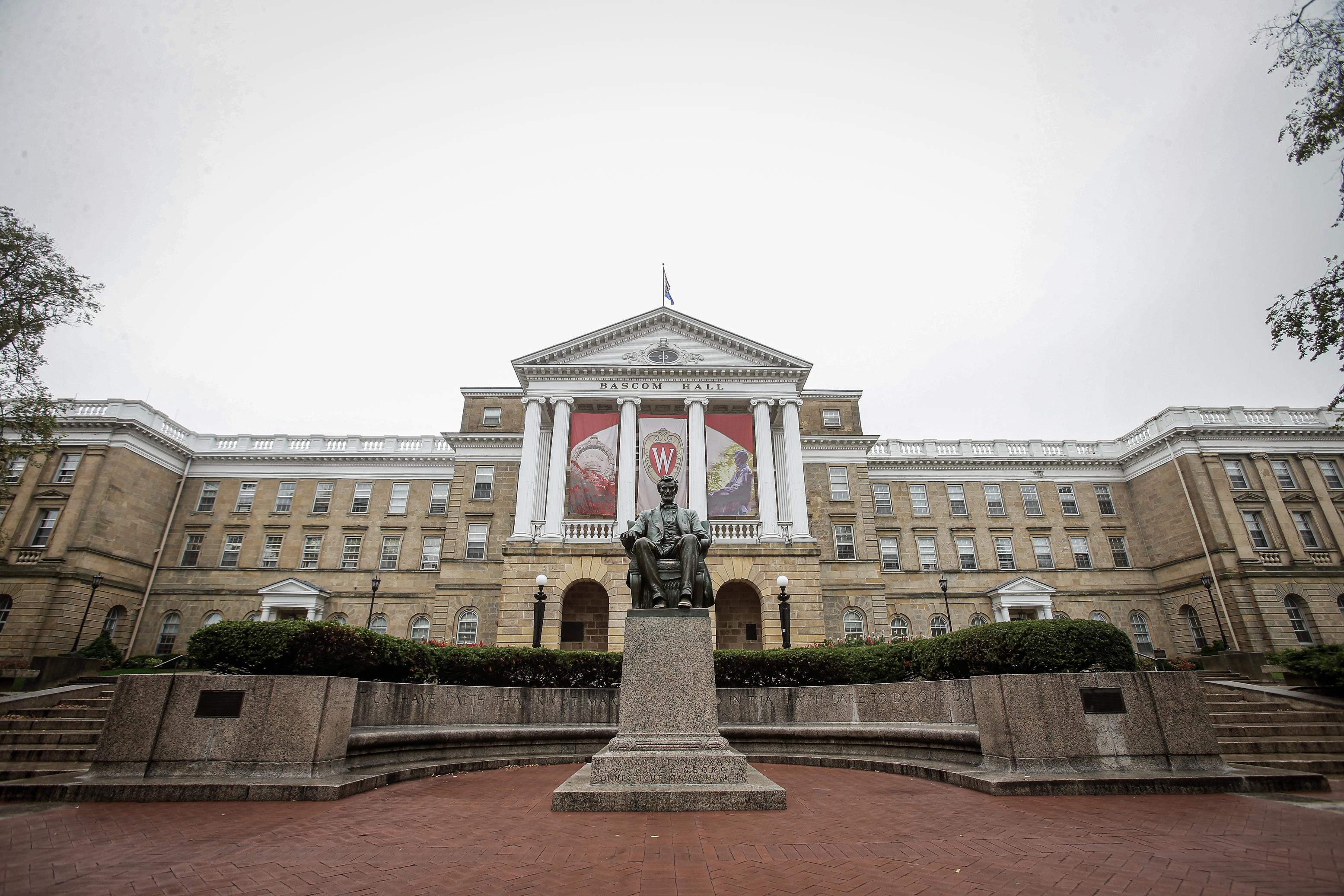
Votes in the four wards of the University of Wisconsin–Madison, the state’s largest school, ranged from 112 percent to 145 percent of voters registered on Nov. 1, 2022. These percentages appear to indicate a rush of election-day registrations, Mr. Heuer said, and a large number of same-day registrations can create substantial problems for state election officials in terms of verifying eligibility, preventing duplicate voting, and so forth.
These additional votes turned out heavily in favor of Democrat candidates, the WVA found.
In wards in which Wisconsin’s largest universities and colleges are located, Wisconsin Gov. Tony Evers, a Democrat, received, on average, about 69 percent of votes. In the four wards where the University of Wisconsin–Madison is located, Mr. Evers received between 82 and 90 percent of the votes.
These numbers are in stark contrast with statewide averages; Mr. Evers ultimately won reelection with about 51 percent of the vote. And WVA argues that the student vote was—and will continue to be—decisive.
Extrapolating from the more than 160,000 students enrolled in the University of Wisconsin system alone and assuming, as in 2022, that 80 percent of them vote and 69 percent of them vote Democrat, this would theoretically deliver a “positive swing” for Democrats of 48,200 votes in Wisconsin, according to Mr. Heuer.
Who Sees Students’ Personal Information?
In addition to the benefits from student votes, there is also the high value of student data.As political campaigns increasingly become a matter of “micro-targeting” individual voters, having the most comprehensive and detailed data on voting-age Americans has become essential to winning elections.
For this reason, analysts have raised red flags about the personal information that is being collected on more than 50 million college students. Critics allege that this data may be accessible to partisan organizations.
The NSC was originally established in 1993 to house data for student loan servicing but over time evolved into the central hub for extensive personal data on high school and college students, which was collected and submitted by their schools. It soon added a research center on student activity and in 2007 received a grant from the Gates Foundation for a student tracking study.
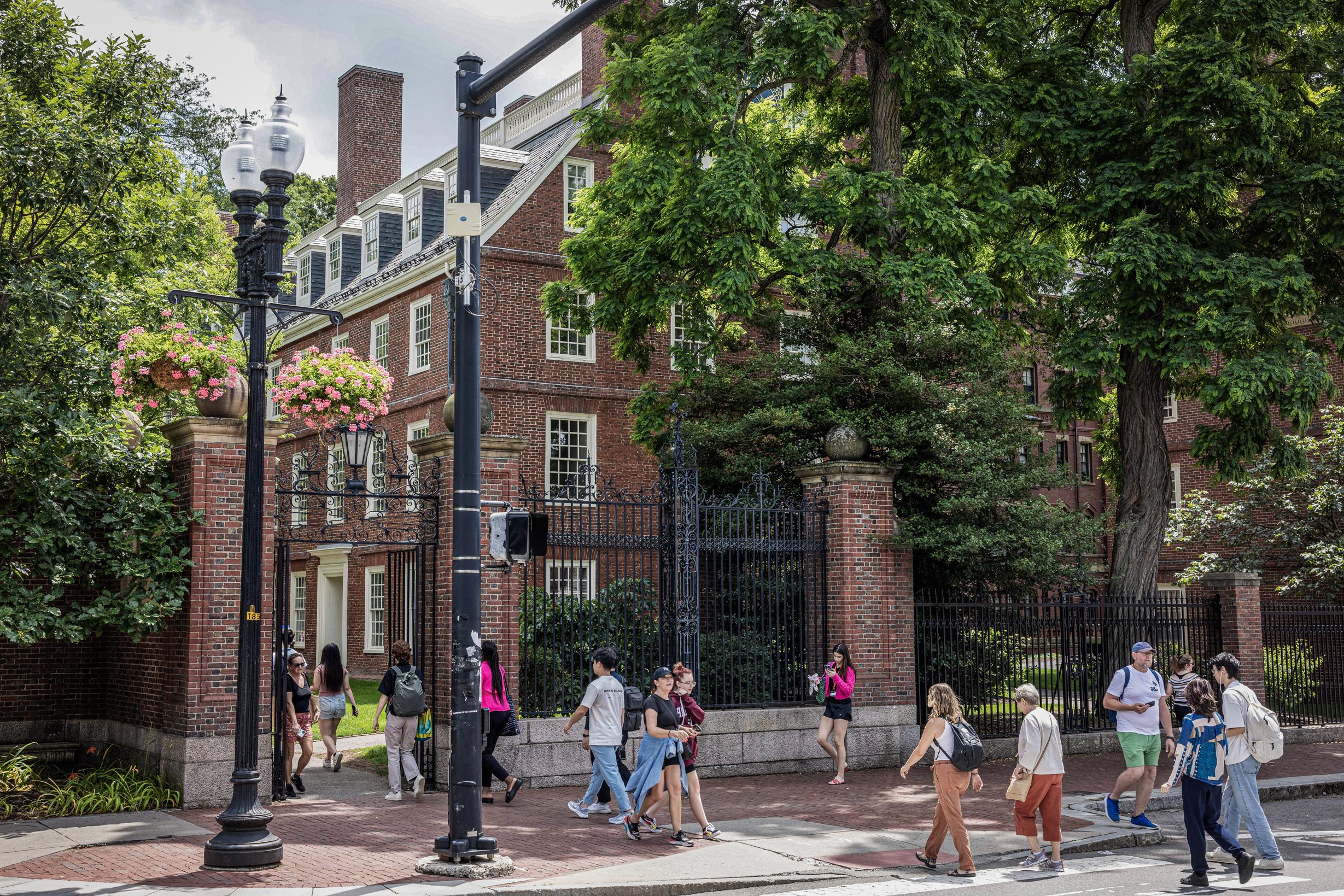
“Institutions that choose to participate in NSLVE sign an authorization form that permits the Clearinghouse to provide a voter organization with student names, addresses, and dates of birth to match with that organization’s voter registration data,” the NSC told The Epoch Times. “The matched dataset is then sent to the Clearinghouse, and the organization destroys the data it received from the Clearinghouse.”
The contracts that schools sign with the NSLVE also permit student data to be shared with a “third party” organization. The third-party partner organizations that have worked with NSLVE in this effort have included data aggregators Catalist and L2 Political.
These third-party partnerships have raised concerns with election watchdog groups.
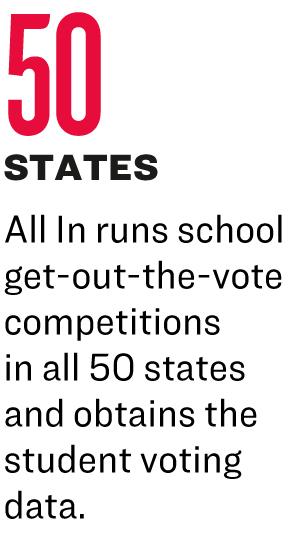
It currently holds detailed personal information on more than 256 million voting-age Americans across all 50 states and has become an essential source of voter data for the Democratic Party.
“In building Catalist as the best, most perfect ‘enhanced national voting-age person database’ that money could buy, one limitation became apparent,” the report reads. “While all states make lists of registered voters publicly available, an accurate list of unregistered persons proved to be elusive, as that enormously valuable data is not commercially available and cannot be bought.”
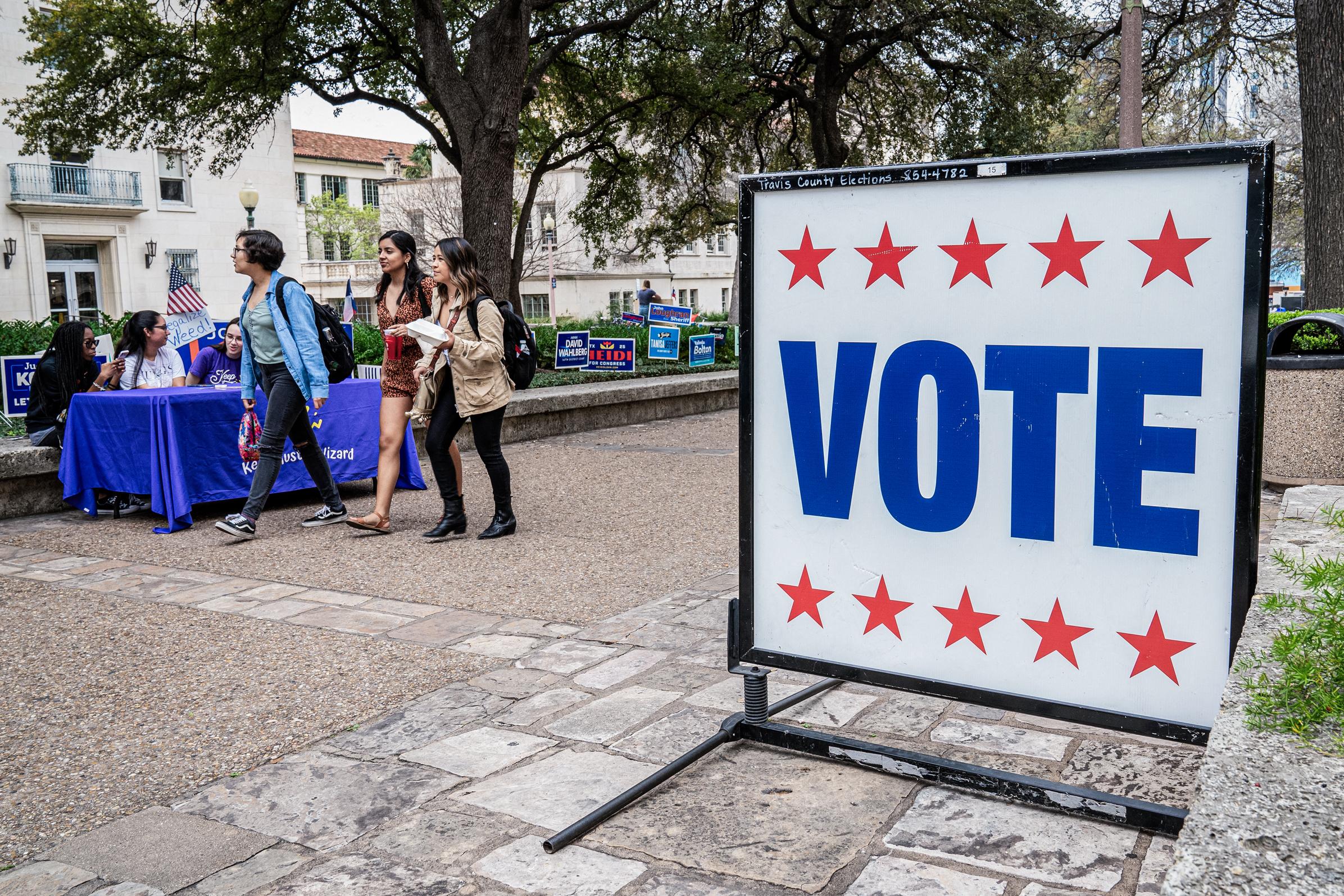
In addition to voter registration lists, data aggregators also collect personal information on potential voters from commercial sources such as credit reports. However, students often do not appear on these lists because they may not have credit histories or utility bills in their name or be registered to vote.
However, Verity Vote stated that the extensive data on high school and college students held by the NSC contains this elusive data. And it could be compared with lists of registered voters in order to derive lists of unregistered voters, to whom political campaigns could be targeted.
However, the NSC stated that it doesn’t share student data with Catalist.
“While the Clearinghouse and Tufts once used Catalist as the voter organization, the Clearinghouse has not used Catalist since 2019,” a NSC spokesperson told The Epoch Times.
The NSC stated that it combines the matched dataset that it receives from third parties with the student data that it receives from schools. Then, after de-identifying the data, it sends it to Tufts, which prepares the aggregate reports for institutions.
Tufts University likewise told The Epoch Times that it no longer uses Catalist and doesn’t provide student data to aggregators.
“When the study launched in 2013, Catalist was our source for voting records, but we switched to L2 Political in 2018,” a Tufts representative said. “In both cases, our relationship with these organizations was simply to access a voter file.”
Tufts stated that neither it nor NSLVE receive students’ personal data “such as names or other information that would enable us to identify individual students.”
Catalist and Civic Nation didn’t respond to requests for comment by press time.
